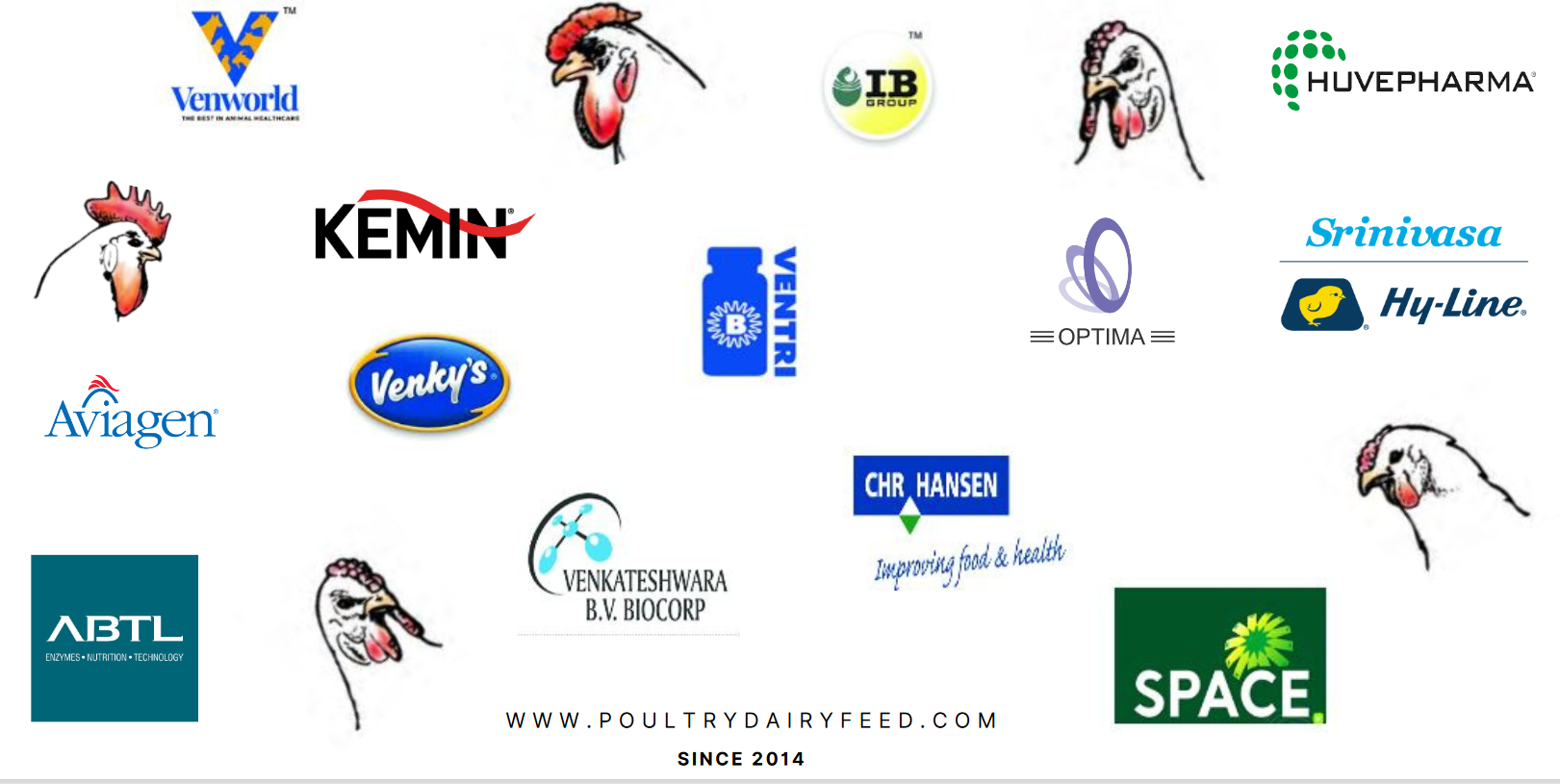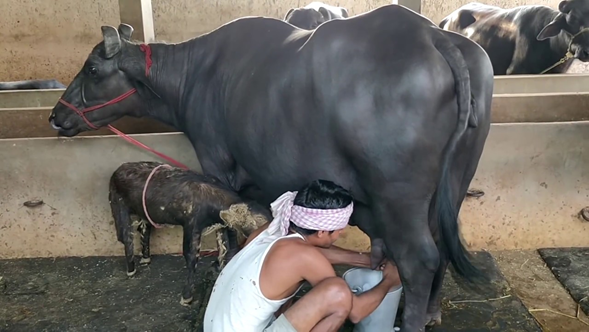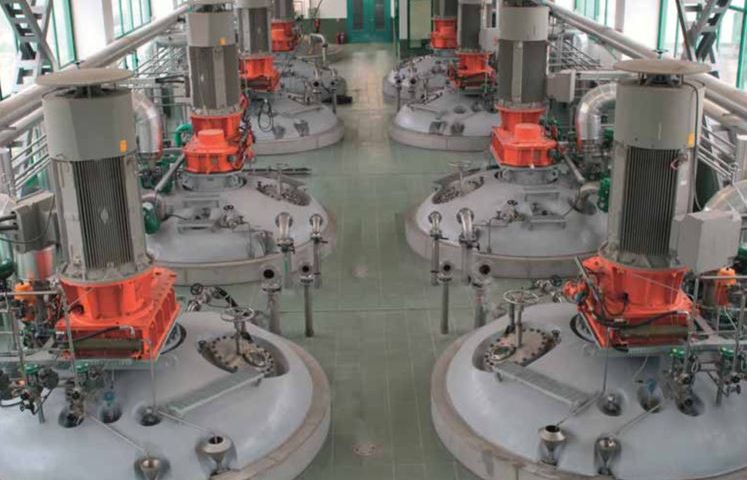Dr. Manish Pathak
Kemin Industries South Asia Pvt. Ltd.
Introduction
Just like cattle, buffaloes’poor performance and reproductive disorders are also associated with mineral deficiency.It is due to unawareness and lack of valid data on buffalo mineral nutrition. As plants undergomaturity, the mineral concentration declines due to the natural dilution process and translocation of nutrients to the root system, which leads to the mineral imbalance.Deficiency exist widely in lactating buffaloes and the severity of deficiency depends upon the type of diet, age, physiological status of the animals and environmental condition of the region. Buffaloes in India are often ignored in terms of mineral supplementation except common salt.In Indian condition, lack of nutritious green fodders which are deficient in several mineral requirementswere observed in buffaloes. Also, buffalo total mixed ration (TMR) is poor in available minerals.Therefore, it has become mandatory to supplement critical minerals to combat the deficiencies which otherwise cause poor milk performance, fertility, immunity, skin condition and health status leading to suboptimal performance and farm profitability.Moreover, buffaloeshavespecific mineral requirements than cow, i.e.,relatively higher mineral requirements per kg milk production in buffaloes when compared with cowforCalcium (↑ 50%), Magnesium (↑ 71%), Zinc (↑ 25%),Copper (↑ 12%),Cobalt (↑ 100%), Iron (↑ 122%) and Iodine (↑ 100%)over the percentage applied in cows). The reasons behind thehigher nutrient requirements in buffaloes is due to rich milk composition (15% higher mineral secretion than cow), higher body weight, and basic differences in metabolism. This article focuses on the role and requirements of key minerals in buffalo feeding.
Table-1: Concentration of parameters observed in milk composition of Buffalo andCow milk.
| Parameter | Buffalo | Cow |
| Water (%) | 81.1 | 87.8 |
| Protein (%) | 4.5 | 3.2 |
| Fat (%) | 8 | 3.9 |
| Carbohydrate (%) | 4.9 | 3.9 |
| Energy (Kcal) | 110 | 66 |
| Calcium (%) | 0.18 | 0.12 |
| Phosphorus (%) | 0.14 | 0.10 |
| Magnesium (%) | 0.02 | 0.01 |
| Sodium (%) | 0.04 | 0.05 |
| Potassium (%) | 0.11 | 0.15 |
| Iron (%) | 3.68 | 3.30 |
| Zinc (ppm) | 3.74 | 3.40 |
| Copper (ppm) | 0.33 | 0.23 |
| Manganese (ppm) | 1.73 | 1.53 |
Classification of Minerals
Minerals are categorized as “macro minerals” and “microminerals”. Macro minerals are expressed as the percent of dry matter in feed. Minerals needed in lesser amounts, often called as trace minerals are usually expressed as parts per million (ppm) or milligrams per kilogram. Some of the macro minerals arecalcium (Ca), phosphorus(P), magnesium (Mg), potassium(K), sodium (Na), chlorine (Cl) andsulphur(S).Whereas, micro minerals containcopper (Cu), selenium (Se), zinc (Zn) andiron (Fe),cobalt (Co), chromium (Cr), iodine(I), manganese (Mn) andmolybdenum (Mo). Important minerals that are useful for lactating buffaloes are described below.
Calcium (Ca)
Buffalo milk is a rich source of calcium when compared to the cow milk, since there is drainage of high quantity of calcium per ml of milk.Therefore, diet calcium requirement is always high in case of buffalo. Key functions of Calcium are as below.
- Bone and teeth formation
- Blood clotting
- Muscle contraction
- Calcium constitute of about 0.12% in milk and 0.23% in colostrum
- Dietary cation anion difference (DCAD) balance
- Diet requirement of Calcium-0.65-0.80%
- Daily requirement of Calcium-22 gram/day/animal + 3.5g of calcium/litre milk production
Deficiency Symptoms
- Milk fever in adult buffalo (DCAD imbalance or high calcium feeding during prepartum diet)
- Low solid not fat (SNF) of milk
- Other metabolic disorders like mastitis, Downers cow syndrome, retention of placenta, prolapse,etc.
- Delay in attaining milk peak lactation
- Inconsistent milk production
- Decreased milk production
- Osteomalacia in adults leading to bone fragility and fracture
Common Calcium feed sources and feed supplements
- Leguminous forages
- Limestone (38% calcium)
- Dicalcium phosphate (DCP) (23% calcium)
- Highly bioavailable and high retention mineral mixture containing calcium
Phosphorus (P)
Metabolism of phosphorus is largely related to calcium. The Ca:P ratio in diet affects the absorption and excretion of these elements (1:1 to 2:1).Like calcium, there is a high drainage of phosphorous per litre of milk. Key function of Phosphorusis as below.
- Constituents of bone and teeth
- Energy metabolism, key component of adenosine triphosphate (ATP)- essential for all cellular activity
- Component of DNA and RNA-essential for growth and protein synthesis
- Phosphorus constitute about 0.09 % in milk
- DCAD balance
- Diet Requirement of Phosphorus – 0.35-0.45%
- Daily requirement of Phosphorus -17 g/day/animal + 2.8g of Phosphorus/litre milk production
Deficiency Symptoms
- Bone fragility, stiff joints and muscular weakness, osteomalacia
- Depraved appetite (Pica)-abnormal appetite and chew wood, clothes, licking of wall, urine, inanimate objects, etc.,
- Reproductive disorder like retention of placenta (ROP), anestrus, repeat breeding, silent heat, abortion, etc.,
- Metabolic diseases like milk fever, haemoglobinuria, ketosis
- Low milk production and inconsistent milk production soon after calving
Common Phosphorus feed sources and feed supplements
- Cereal grains
- Grain byproducts (wheat bran and rice bran)
- Oil seed meals(rapeseed meal, soya meal and mustard cake)
- Dicalcium phosphate (18.5%) and Mono calcium phosphate
- Highly bioavailable and high retention mineral mixture containing phosphorus
Magnesium (Mg)
Magnesium is closely related to calcium and phosphorus metabolism. Key functions of Mg are as below.
- Essential constituents of bones and teeth
- Enzyme activator-transferring phosphate from ATP to adenosine di-phosphate (ADP)
- Cofactors for decarboxylation of peptidases, acids and alkaline phosphatases
- Muscle relaxation
- Diet Requirement of Magnesium – 0.25-0.35%
Deficiency Symptoms
- Lactation tetany (Hypomagnesaemic Tetany)-excessively fed on lush green pasture
- Hypocalcaemia-symptoms like milk fever
- Muscular spasms-convulsions
- Staggering gait
- Excitability
- Drastic downfall in milk yield
Common Magnesium-feed sources and feed supplements
- Green fodders
- Brans
- Cotton seed cake
- Linseed cake
- Highly bioavailable & high retention mineral mixture containing Magnesium (propionate chelated)
Zinc (Zn)
Zinc is an essential component of over 200 enzyme systems and over 1000 protein. In present context of buffalo, Zn is a vital trace mineral which has multiple functions and its deficiency leads to various symptoms. Key functions of Zinc are described as below.
- Carbonic anhydrase (found in red blood cells – RBC) contain 0.3% Zn and plays an essential role in eliminating carbondioxide. Zinc serve as an indicator of alkaline phosphatase which play a role in keratinization and calcification.
- Zinc plays key function in nucleic acid metabolism, protein synthesis and carbohydrate metabolism
- Zinc has many biologically significant interactions with hormones like estrogens, testosterone, insulin and adrenal corticosteroids
- Immunity
- Taste sensation as well as maintaining dry matter intake and feed efficiency
- Skin and wound healing (hoof health and mastitis)
- Water and Cation balance in body (diarrheaand excess calcium in diet)
- Zinc is involved in Vitamin A metabolism andretinol binding protein (RBP) which is a carrier of vitamin to plasma from liver
- Diet Requirement of Zinc – 45-55 mg/kg
Deficiency Symptoms
- Reduced feed intake and feed efficiency
- Alopecia over muzzle, ears, tail head, hindlegs, flank and neck
- Stiffness of joints with soft edematous swelling of the feet in front of fetlock joint
- Cracks on the skin of coronary bands around the hooves which later becomes deep fissures and bloody
- Dry scaly skin over teats
- Lower conception rate, anestrus and repeat breeding
- Delay in involution of uterus soon after parturition
Common Zinc feed sources and feed supplements
- Forages
- Oil Cakes
- Zinc propionate (high bioavailable and most highly retention mineral)
- Yeast
Copper (Cu)
Just like Zinc, Copper also plays a key role in production as well as reproduction in buffalo. Key functions of Copper are described as below.
- Component of enzymes like superoxide dismutase, ceruloplasmin,cytochrome C oxidase, lysyl oxidase (for the functioning and formation of connective tissue, essential for wound healing and structural integrity of blood vessels)
- Synthesis of Haemoglobin (present as Hemocuprein)
- Immunity
- Horn and hooves health
- Significant correlation with reproductive hormones like progesterone and estradiol
- Pigmentation of Skin and Hair
- Diet Requirement of Copper- 12-16 mg/kg
Deficiency Symptoms
- Excess diet withmolybdenum and sulphur leads to conditional or induced deficiency
- Emaciation
- Anaemia
- Persistent Diarrhea
- Depigmentation of skin and hair
- Leucoderma in buffaloes
- Infertility
- Retained placenta, repeat breeding and anestrous
- Retarded growth
- Decreased milk production
Common Copper feed sources and feed supplements
- Cotton seed meal
- Dried Distillers Grains and Solubles (DDGS)
- Copper propionate (high bioavailable and most highly retention mineral)
Manganese (Mn)
Manganese is an indispensable mineral for dairy buffaloes like other minerals. Key functions of Mn are described as below.
- Activation of enzymes like arginase, thiaminase, etc.,
- Carbohydrate, protein, nucleic acid and fat metabolism
- Growth
- Bone formation
- Required for synthesis of estrogen, progesterone
- Diet Requirement of Manganese- 45-55 mg/kg
Deficiency Symptoms
- Poor conception rate
- Delayed signs of estrous
- Delay in corpus luteum formation
- Increase in inter calving period
- Decrease in milk production
Common Manganese feed sources and feed supplements
- Whole rice
- Cereal grains
- Bran
- Highly bioavailable & high retention mineral mixture containing magnesium (propionate chelated)
Cobalt (Co)
When it comes to reproduction performance of dairy animals, cobalt plays an important role in buffaloes. Key functions of Co are described below.
- Interrelated with Vitamin B12- rumen microbes synthesize vit B12 in presence of rumen microbes
- Rumen microbes’ growth largely dependent on amount of cobalt concentration
- Essential part of several enzymes, which are required for various metabolic functions
- Diet Requirement of Cobalt – 0.11 mg/kg
Deficiency Symptoms
- Failure of appetite
- Anaemia
- Decreased milk production
- Rough hair coat
- Silent heat
- Nonfunctional ovaries
- Abortion
- Quality and quantity of colostrum is reduced
- Pica
Common Cobalt feed sources and feed supplements
- Legumes
- Cobalt sulphate and cobalt chloride
Sodium (Na), Chloride (Cl) and Potassium (K)
The main key functions of Na, Cl and K are as below.
- Acid base balance
- Muscle contraction
- Nerve transmission
- Dietary cation balance in transition dairy buffalo
- Diet Requirement of Sodium – 0.28-0.45%
- Diet Requirement of Chloride – 0.28-0.35%
- Diet Requirement of Potassium – 1.0-1.6%
Deficiency Symptoms
- Craving for salt
- Reduced appetite
- Pica
- Shivering and incoordination
- Lusterless eye
- Rough hair coat
- Low dry matter intake
- Low milk production
Common feed supplements for Sodium and Chloride
- Common salt
- Sodium Bicarbonate
Common feed supplements for Potassium
- Legume forages
- Oat hay
- Potassium chloride
- Potassium sulphate
Sulphur (S)
The key function of Sulphur is described below.
- Rumen microbial protein synthesis
- Hair and Hooves health
- Found in cartilage, tendons and amino acids
- Diet Requirement of Sodium – 0.20-0.22%
Deficiency Symptoms
- Reduced feed efficiency
- Decreased milk production
Common feed sources & feed supplements for Sulphur
- Oil cakes
- Legume forages
- Sodium sulphate & Potassium sulphate
Conclusion
Minerals act as a functional nutrientand plays a vital role in production and reproduction of lactating buffaloes like dairy cows.It governs various physiological functions of body and helps in improving feed efficiency.Buffaloes are ignored animals in terms of mineral supplementation. Only calcium sources are given to fulfill mineral requirement and other important trace minerals are missed, as there is no awareness regarding other functional minerals. Buffaloes are reared for high milk composition, therefore, for improving milk composition and to combat various reproductive disorders,highly bioavailable organic minerals with high rate of retention are preferred.





